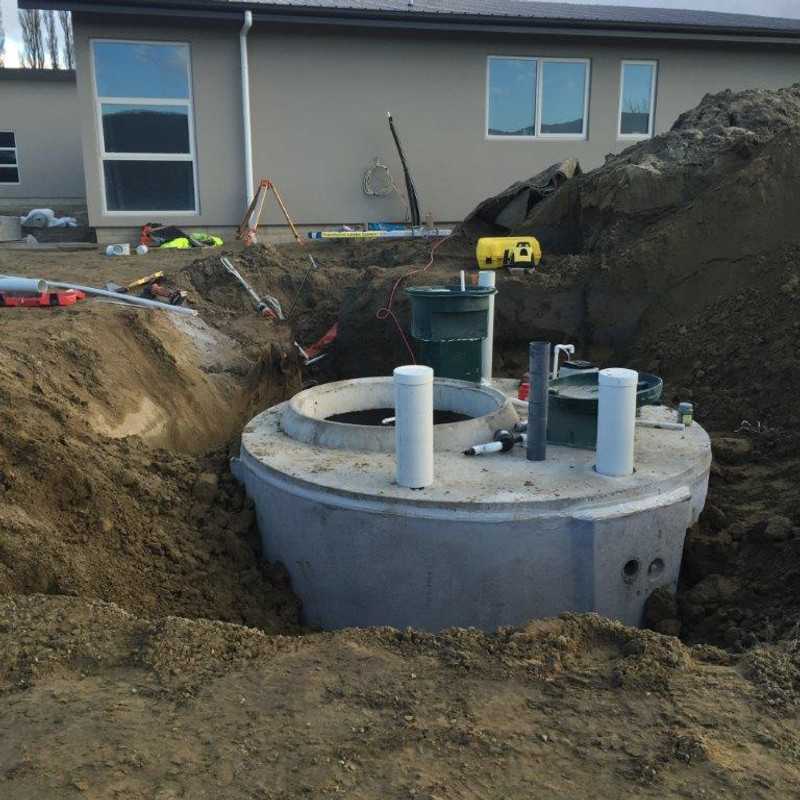How do septic tanks work?
Septic tanks work as an on-site sewage system or treatment plant. Wastewater is fed to the tanks (usually via gravity but also by pumps) which is why septic tanks are usually placed underground. The wastewater travels through a filtering system and is partially processed by bacteria. On-site sewage systems can either break waste down using oxygen (aerobically) or without oxygen (anaerobically).
A healthy septic tank ecosystem has three layers:
- a layer of fats called scum, which floats on the surface of the liquid waste
- a layer of liquid waste called effluent
- a layer of solids called sludge, which sinks to the bottom
The scum (or layer of fats) helps prevent odours and air entering the ecosystem. Bacteria living in the tank work on breaking down organic solids (or sludge). At this stage, the effluent still contains large amounts of pollutants, salts and high levels of nutrients such as nitrogen and phosphorus (which can cause toxic algae blooms in waterways). It can also contain diseases, such as viruses, harmful bacteria, and parasites. Viral and bacterial infections are the most common causes of sickness in New Zealand. Campylobacter and Salmonella are two common forms of bacteria that are carried in human waste that can cause serious illness. That is why it’s so important to have a wastewater system that is safe and of the correct size for your household.
From here the treated water is distributed out to an absorption field or soakage treatment area. This is where natural soil processes kill off more pathogens and break down the harmful toxins. It is important that this is a slow, safe process as too much effluent can overwhelm the soil and flow into subsoil pathways and drainage channels. In New Zealand, we commonly plant native grasses and other plants that are very effective in a soakage area. Having a site visit and expert come to look at potential areas to have your soak area is key in the process of installing a septic tank as there are several things to consider before introducing a soakage treatment area.
The soakage treatment area should be:
- large enough to cope with the amount of wastewater your household produces
- as dry as possible – pathogens survive better in waterlogged soil
- shallow – this allows plants to absorb nitrates and organisms in the soil and the heat of the sun to act on pathogens to remove them
- away from waterways, flood-prone areas and areas of stormwater runoff
- while surface water should be diverted around any effluent disposal field
Grey Water and Black Water – What is it? How can you utilise your water?
Greywater is wastewater that can safely be reused, so household wastewater from laundry tubs, washing machines, showers, baths, and basins. This water, with building consent, can be reused to water the garden or flush the toilet. A grey water system can be put in for example, where grey water is collected and filtered (for things such as lint and fats are filtered out). There are some important lifestyle guidelines and several options that go along with installing and collecting any grey water, so it’s best to discuss this with one of our experienced team before deciding to go ahead.
Blackwater is wastewater containing human waste. You can’t reuse it, it must go into the mains sewage system or (if rural) into an on-site sewage system – your septic tank.


